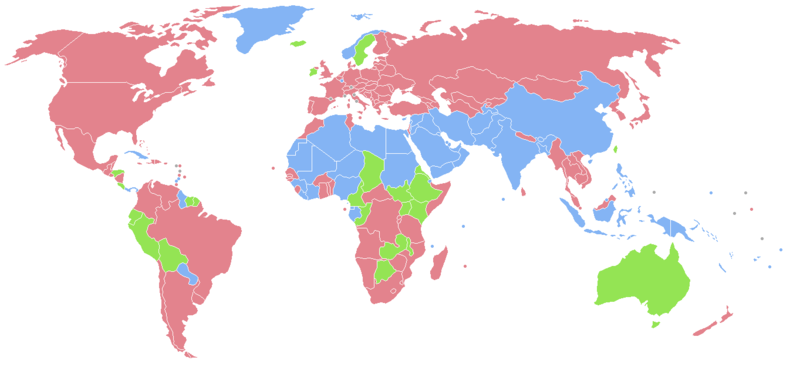For all of the past four weeks, different parts of the society rallied and protested. Some calling for death penalty for the alleged criminals. Others calling for stricter laws. Many others calling for nothing but the most basic requirement of all- 'Action'
Going by the statistic that a rape is committed in India every 22minutes, there have been 1832 rapes since the crime in Delhi on the 16th of December. Startled, i try to look at the issue from the angle of some other numbers. I chose to start from the odd analysis using high school level of ratio and proportion.
As per the 2011 census in India, India has a gender ratio of 940 to 1000 males. Which effectively means there are 581 million women in India versus 618 million men. This translates to an unbalance of about 37 million more men than women over the entire population. The number may seem small unless you try and see it from a different stand point and perspective.
It basically means two cities like Mumbai or Delhi or 5 countries like Singapore, with NO WOMEN. Who is to be blamed for lack of inaction in formulating a policy structure enforceable to avoid a "Coutry of all men". The people, and by them their Government's? Lessons need to be drawn from nations like South Korea which have successfully tackled the issue in the past. In addition the Sate Govt.'s need to establish a metrics wherein social agenda is chalked out taking this inequality into account. Sadly, 4 of the 6 worst figures for Gender ratio are from Union Territories for sure areas wherein UT administrations are to be held responsible.
Now as much as I 'respect' our wonderful politicians, God-men, News Anchors or for that matter the popular opinions on their , "How Not to Get Raped in India" diktat's for women, the problem clearly is way more deep than short skirts can solve.
Women in a society so fundamentally imbalanced as India are not safe, and there aren't many ways to put it differently.
The past few days have seen self confessed gurus come out and speak loudly about the impact westernization has had, or the treatment being 'right' for girls calling for attention, or for those not doing enough to protect themselves. Central Govt. has blamed state police machinery and the States have been sharp as ever in playing the "Not me but You.. " on virtually all issues.
Clearly there has been complete apathy towards greater look at policy reforms for addressing the root cause. This however is not to take away the importance of enforcement of law where again we have failed miserably. By now the media has often played out hawkishly the low rates of conviction in case of rapes in India. In a country with over 4 million court cases pending, it is not surprising to hear of judgments being delayed, appeals pending decision and eventually hapless victims losing moral courage to pursue a road to justice, long out of sight.The Chief Justice of India by far gave the most responsible call of all the eminent people in the wake of the crisis. His urging State High Courts and lower courts to expedite trials involving Rape was a wake up call to put words into action, and emotion into conviction.
Yet, the wheel wouldn't turn a full circle of change if elementary assumptions on reasons of rape remain in the minds of people and the policy makers. There is NO REASON on why a woman gets raped, but there may be some on why a man is a rapist. This may seem a fundamental play of words but signals a change of perspective. The travesty that the victim begged to be victimised, is rightfully read, as a criminal perpetrated the crime.
It is not till the process of addressing the RIGHT issues gets sorted out, that we shall even begin to see any change.
I wish that this entire issue would have not however highlighted another grave issue, an issue of even more far-reaching consequences than currently the media houses understand. That of a nation losing trust in its Police.
Begin to think about it, how destructive can a nation become if its citizens were to doubt those entrusted with safeguarding them? The recent spotlight on the unspoken reality of Indian police's high-handedness and their obvious lack of ability in handling people presents a perfect blend- One of British era of colonialist attitude, and Independent India's bureaucratic inefficient aptitude. However to pass a judgment at this stage would be unfair. As we'd be making the same mistake as our policy makers often do, ignore the stats.
India's Police Personnel per capita number is 41.4% lower than the 222 per 100,000 people recommended by United Nations. But the people today question, would getting more of those cut from the same cloth cover the bare body of India social structure? What is that we may do to avoid the inevitable state of having more questions than answers?
Yet, our learned politicians for sure lnow all these facts. That they chose not to address these issues is entirely a call they have made repeatedly in successive governments. But calls that they make from hereon would decide not just the fate of this case, the justice for this one brave girl, but the women of an entire nation. My best wishes with them all.
Courtesy: Wikipedia, CIA World Factbook

Sex ratio total population. Pink = Female higher than male. Green = Equal Blue = Male higher than female
Grey = No data
*Disclaimer: Some numbers may differ from data sources that people may refer. The author's views are entirely his own and not of any organization, government or otherwise.
